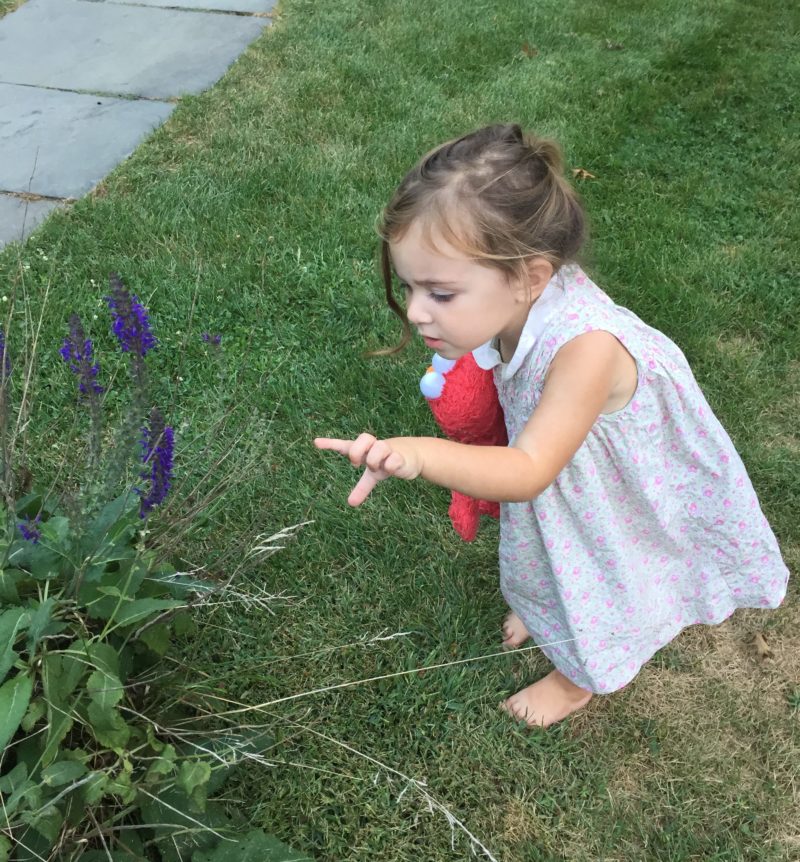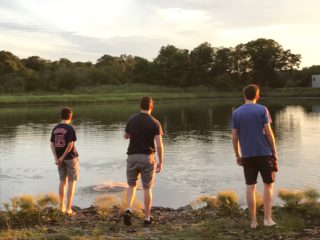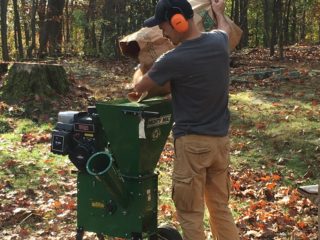I was updating the section on natural pesticides in my post on Healthy Yards and it began to grow (dare I say, blossom?) and take on a life of its own. I realized that it was such an important topic and there was so much to cover that it deserved its own, dedicated post. I also have room here to expand my suggestions for natural alternatives. So, here I go.
Pesticides: The Big Picture
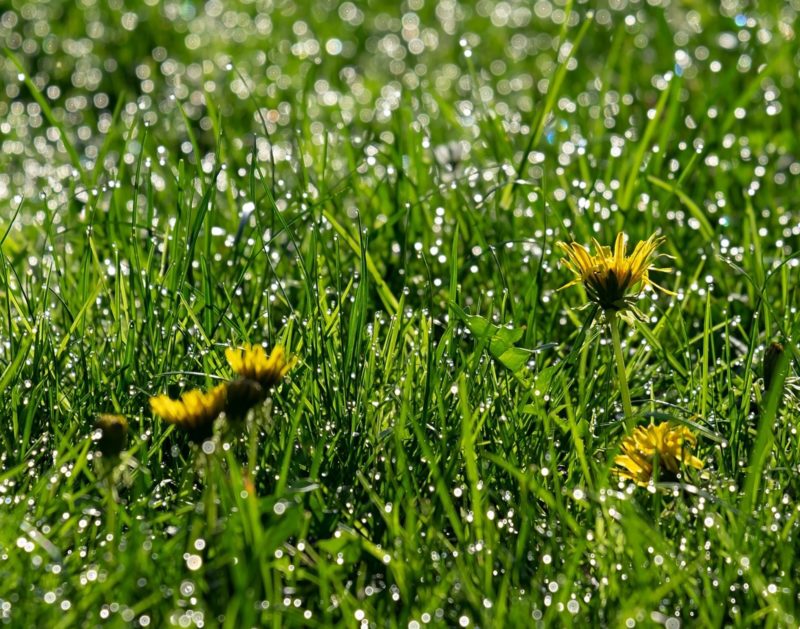
What Are They?
- Herbicides, to destroy (mainly) weeds.
- Rodenticides, to repel or destroy rodents.
- Insecticides, to destroy insects.
- Fungicides, to prevent the buildup of mold and mildew.
Avoid Toxic Pesticides
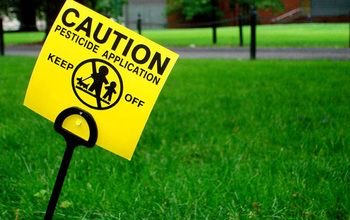
To state it plainly: avoid lawn care products that contain toxic pesticides in favor of natural products and/or practices. I list below some reasons why and resources for further reading.
Why?
Health Effects
Who’s at risk? Products that contain toxic pesticides carry with them a whole host of health-related problems. Prolonged exposure can be particularly harmful to children and fetuses, but all of us are at risk.
Diseases. Some of the health effects that result from exposure impact the nervous system, cause cancer, affect the endocrine system, or irritate skin and eyes. Health risks depend, among other things, on the level of toxicity, the length of exposure, and how the person is exposed to the chemical.
One of the most commonly used weed killers, glyphosate, has been the subject of recent news, with a jury awarding over $80 million to a California man who blamed Roundup weed killer for his cancer. More lawsuits from others are in the pipeline.
Lasting health effects. A new study by Washington State University concludes that there’s an increased chance of certain diseases and birth defects in the grandchildren and great-grandchildren of those exposed to glyphosate. You read that right: if you’re exposed, the lasting effects of that exposure could harm future generations.
Side-effects for Your Lawn
Chemical dependency. Your lawn can become dependent on some of these chemicals, ultimately needing more and more to sustain that green, manicured look.
Indiscriminate killer. Pesticides also destroy natural pesticides: insects. These toxic products don’t differentiate between good and bad bugs, so the ladybugs, honeybees, or other beneficial insects that help protect your healthy yard are killed, along with other garden pests.
No boundaries. You may think, well, those toxic chemicals are outside, so as long as I’m careful and wait a few days after application, I’ll be fine. Unfortunately, it doesn’t work that way.
I’ve written above, about the resilience of pesticides, like glyphosate. These chemicals are designed to last. So if you, your kids, or pets walk, roll, or play on a chemically-treated lawn, those chemicals are coming into the house with you.
And now, imagine if your lawn and all your neighbors’ lawns are treated and it rains. All that runoff must go somewhere. Most of the time those chemicals end up in other open spaces and in our waterways.
Resources
National Pesticide Information Center. The name says it all. This has a wealth of information on everything related to pesticides.
Beyond Pesticides Organization’s fact sheet on the Environmental Effects of the 30 Commonly Used Lawn Pesticides is an invaluable summary for gardeners.
Icahn School of Medicine at Mount Sinai’s informational pamphlet is excellent for a deeper read on lawn and garden pesticides, health risks, and how to reduce exposure. There’s also a specific fact sheet on glyphosate-based weed killers.
Centers for Disease Control and Prevention is a good resource for a summary of health effects and further reading.
National Institutes of Health provides a broader overview of pesticides that goes beyond lawn and garden products. It’s worth a read.
What Can I Do?
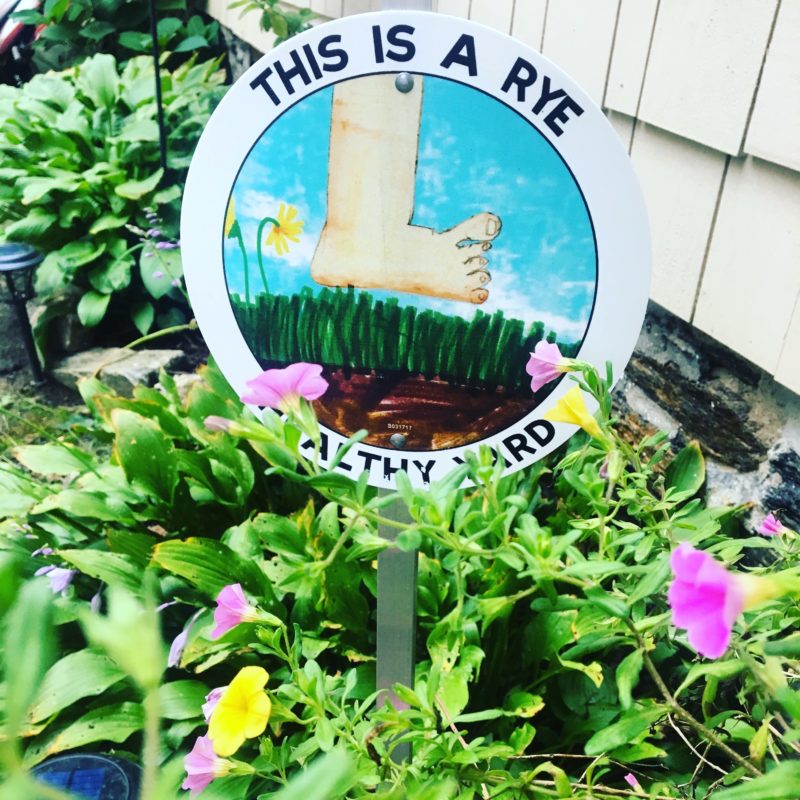
With 40 million acres of our country blanketed with a variety of lasting, toxic pesticides, it may seem pointless to make a change in your yard.
That’s just not true! We’re at this point because chemical companies, looking for new markets after World War II, convinced Americans, one by one, and then in increasingly greater numbers, to turn away from traditional (natural!) lawn care practices.
Now it’s time to reverse this trend. You might be the first in your neighborhood to make the change and inspire others to take action with you. Or you could join fellow neighbors who’ve already made the switch. It doesn’t matter. What matters is that you make a commitment to change. Keep at it and these small changes will add up beneficially for you and the planet!
The good news is there are several simple and cost-effective ways to have a healthy and beautiful yard using natural pesticides and other natural techniques.
Natural Pesticides and Pest-Combating Practices
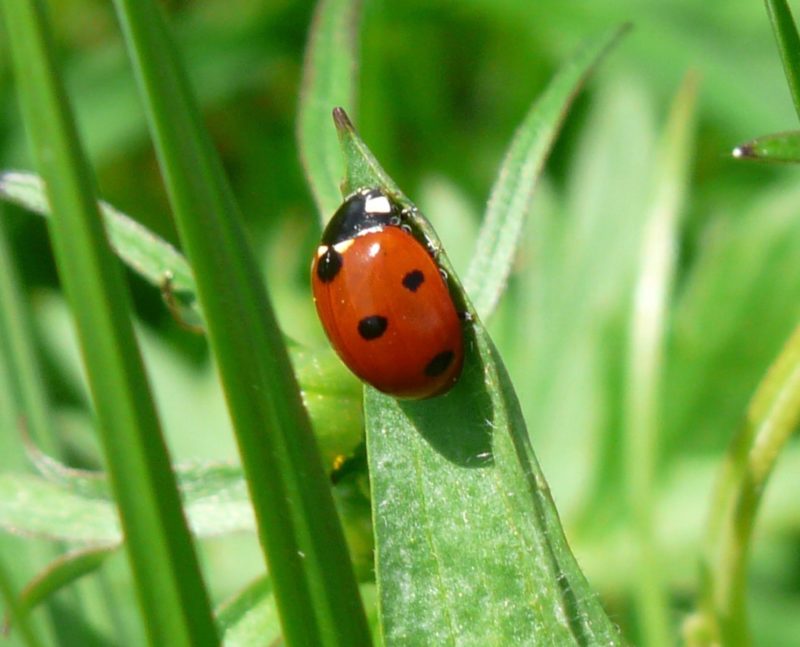
The (Virtually) Free Solution
Muscle power!
Hand pull or use a weeder to get rid of those pesky weeds from your lawn.
Integrated Pest Management (IPM)
IPM’s goal is to create conditions in your yard (and home) that keep pests away. The easiest way to do that is by eliminating the pest’s food, water, and shelter.
Resources. The National Pesticide Information Center has a pest-specific information list with detailed tips for eliminating dozens of types of pests.
If you want more, Beyond Pesticides has its own list.
Go Native
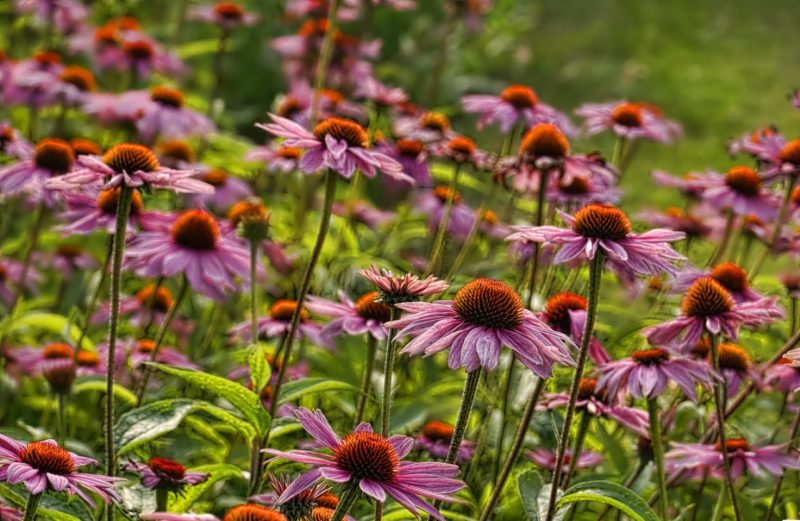
Native Plants are a beautiful and natural way to keep pests at bay. The Go Native section of my Healthy Yard post addresses native plants and how to select the right ones for you.
Beneficial Insects
One of the main problems of toxic insecticides is that they don’t discriminate between pests and “good” bugs. Insects that are good, or a benefit, to your yard are beneficial insects. They help you out as they feast on pesky pests!
Where to Buy. Planet Natural will ship the insects to your home.
Resources. NPIC’s page on beneficial insects contains tips and a list of insects that you want to keep in your garden.
Homemade Solutions
Insecticides. These include chili pepper, garlic, and neem, among others. Tree Hugger has all the recipes to get you started!
Weedkiller. I’ve found pouring boiling water on cracks in my walkway and driveway does the job.
Here’s another easy and affordable remedy. Mix all these ingredients in a spray bottle and spray those weeds away:
- 1 gallon white vinegar
- 1 cup salt
- 1 tablespoon natural liquid soap
The Purchased Solution
Sometimes, no matter how hard you try, your yard will still be invaded with weeds. Before you reach for chemicals, try these natural pesticides and alternative techniques.
Weeds, Moss, Algae, Fungus
- Herbicide. All Down is a broadleaf grass herbicide.
- Corn gluten, like Earth Easy’s, is a good alternative to chemical applications, and it also acts as a fertilizer. Espoma’s organic weed preventer, made from corn gluten, also works well.
- Dandelions. Concern Weed Prevention Plus gets rid of dandelions and crabgrass.
- BurnOut weed and grass killer is safe for humans and pets.
- Moss & Algae. Safer brand will kill algae, mosses, lichens, liverworts, and grime.
- Fungus. Sulfur powder is a natural fungal disease control product that helps control fungus and mites on flowers, fruits, and vegetables. Bonide Sulfur Dust is a natural fungicide and miticide product that can control rust, leaf spot and powdery mildew, along with certain mites, thrips, and scale.
Pests
- All-purpose. Safer brand 3-in-1 spray targets and kills a wide variety of pests.
- All-purpose. Monterey’s neem oil is a broad-spectrum insecticide, miticide, and fungicide.
- Japanese Beetle. St Gabriel’s Organics Milky Spore granular form, or in powder form, kills at the grub stage.
When Nothing Else Works: The Chemical Option
You’ve tried it all and still, that specific pest remains. Now what?
Low-Risk Pesticides
Guidelines for identifying the least toxic pesticides: Avoid the most toxic label (as required by the EPA): 1) Danger, followed by 2) Warning and then, 3) Caution.
Precautions
Some simple and commonsense precautions include:
- Hiring a licensed professional to apply chemicals.
- Avoiding spraying/spreading around children.
- Avoiding spraying/applying near bodies.
- Destroying pests at the larval stage. A more effective strategy that generally uses fewer chemical applications.
- Not pouring pesticides down the drain.
Resources
Bio-Integral Resource Center puts out a Directory of Least Toxic Pest Control Products
Our Water Our World organization has its own directory.

